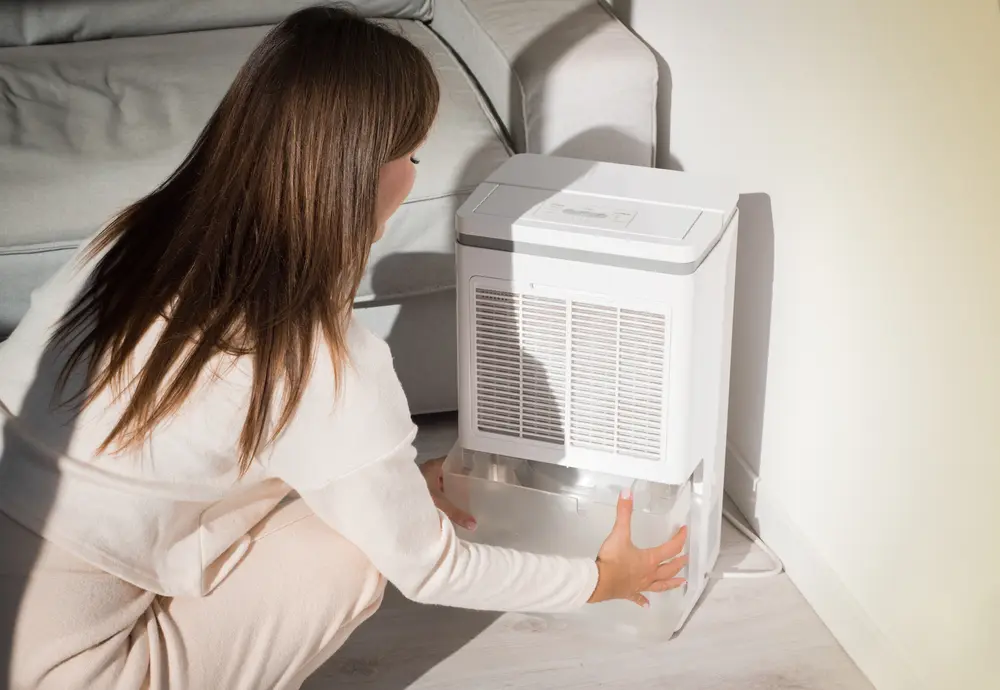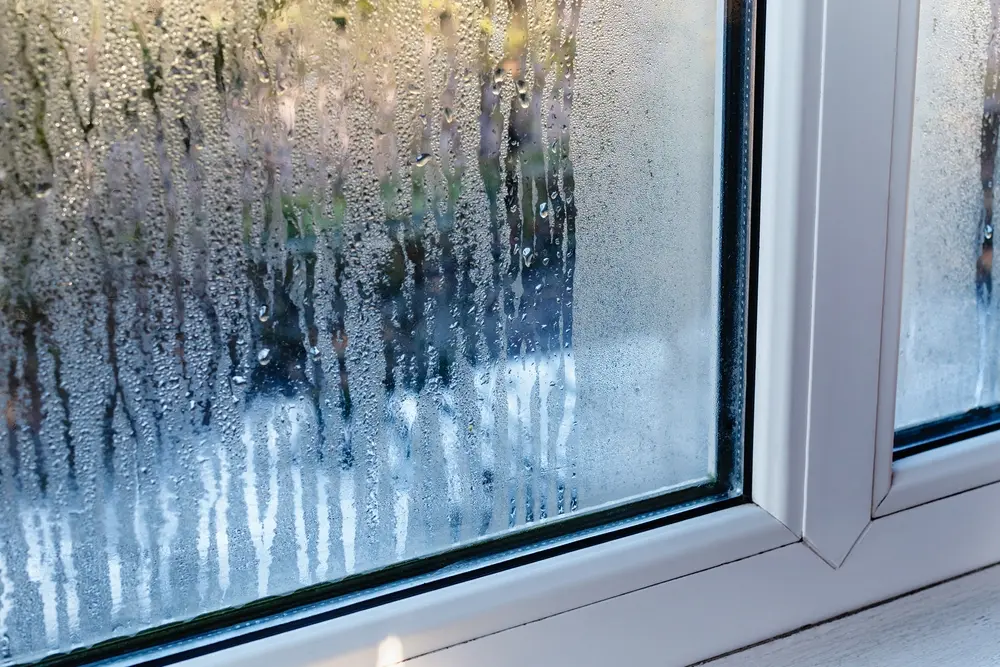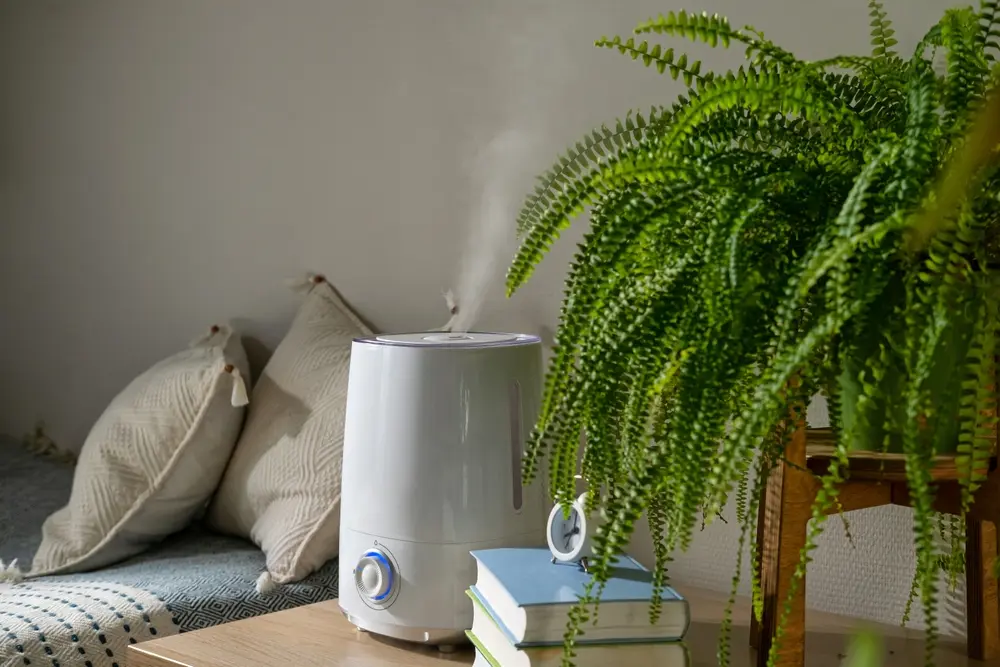
Your House Humidity Levels & How to Control Them
Humidity can be a fickle thing. Sometimes it’s too high, sometimes it’s too low—if it’s never just right, it could mean you have a humidity problem. So how can you make your home feel just right, no matter the time of the year? The experts at Charles Stone can help.
Read on to learn more about humidity and how you can maintain a perfect level in your home.
What Is Humidity?
When you think about humidity, what comes to mind? Sticky, moist air? Humidity is simply the measure of water vapor in the air. The concentration of water in the air can either be high, low, or somewhere in between. Humidity in the summer is usually higher than humidity in the winter. This is because warmer air can hold onto moisture a lot easier than cold air.
Indoor humidity works the same way. The first step in getting the humidity level in your home to an ideal level is to understand the two types of humidity: absolute and relative.
Absolute Humidity
This type of humidity is calculated by how much water is in the air divided by the mass of the air in a given space. Absolute humidity can be equated to the literal mass amount of moisture. Absolute humidity is expressed using (g/m³), which is the grams of moisture per cubic meter of the air.
Relative Humidity
Relative humidity measures the current moisture level in the air relative to how moist the air could be. This differs from absolute humidity which only measures the water vapor content in the air. So if the humidity level in your home reads at or around 45%, the air around you is about 45% as moist as it could be.
Ideal Humidity Levels for Your Home Year-Round
Now that you understand the different types of humidity measurements, the next question is
: what is the best humidity level for your home? Ideal home humidity levels will differ from season to season.
- In summer, it’s best to maintain humidity above 40% but no less than 60%.
- In winter, humidity levels should remain between 30% and 40%.
What is Considered High Humidity?
Anything above 60% is considered high humidity. There are a few ways to see this. If moisture builds on your windows while either showering or doing the dishes, you have high humidity. High humidity can actually promote mold growth, especially in smaller, less ventilated areas. Avoid mold, mildew, and allergies by maintaining a healthy humidity level from the get-go.

How High Humidity Affects Your Health & Home
It’s not just the air that it affects. High humidity can affect many aspects of your home and respiratory health:
- Promotes the growth and spread of mold
- Enhances allergy symptoms
- Creates or worsens respiratory problems
- Emits foul odors
- Higher utility bills
- Excessive moisture can damage your furniture and floorboards
- Attracts termites and carpenter ants
How to Lower Humidity in Your House
If you have high humidity, don’t worry. There are a few ways you can lower it:
- Invest in a dehumidifier – This is a solution for those experiencing a consistent high humidity problem. A dehumidifier pulls in the air, removes the moisture, and pushes the air back out. These are perfect for rooms that get humid.
- Clean your dryer vents – Clogged or poorly-vented ducts can cause moisture to accumulate which leads to a rise in the humidity level. Cleaning dryer vents enhance ventilation for better humidity levels.
- Run your AC or furnace – Using your HVAC units like the air conditioner changes the humidity by removing excess moisture in the air.
- Turn on your AC, exhaust, & ventilation fans – These fans assist in removing excess moisture in the air. Simple ways to remove moisture from the air include turning on the air conditioner or ventilation fans after a shower.
- Explore air purifiers – A purifier helps remove toxins from the air, preventing exposure to contaminants like dust, mold, or allergens.
- Ventilate your crawl space – Encapsulating and venting out your crawl space prevents moisture from the ground from increasing the overall humidity level.
What Is Considered Low Humidity?
Anything below 30% is considered low. When there is not enough humidity, the air becomes very dry. You may begin noticing certain signs if your home air is too dry:
- Itchy or dry skin
- More susceptible to colds and infections
- Interruptions to your sleep
- Paint drying and cracking
- Damage to wood furniture and hardwood floors
- Respiratory problems like coughing and wheezing

How to Raise Humidity in Your House
Controlling humidity may seem difficult, but the experts here at Charles Stone have some tips and tricks to get your levels just right.
- Invest in a humidifier – You’ve probably seen small, portable humidifiers. These are great for increasing humidity in isolated areas. However, a whole-home humidifier provides more efficient control for your entire house. Charles Stone also offers whole-home purification systems.
- Houseplants – Did people know what they were doing when they started cultivating urban jungles? Probably not. But houseplants sure do help with humidity. Plants release vapor into the air while the soil holds and evaporates water. Plus, they look really cool. Suggested plants include Palms and Chinese Evergreens.
- Boil a pot of water – When water boils, it releases steam into the air which helps to improve the humidity level. You can even go a step further and add things like cinnamon sticks and citrus peels to your pot. This makes your house smell good while also increasing the humidity.
- Hang dry your laundry – Yes, hang-drying your clothes takes more time—but trust us, it’s worth it. Hanging your laundry allows the moisture to evaporate into the air. This of course directly affects your humidity level. It’s a great way to increase humidity in the winter.
- Use steam from the shower – This is a simple yet effective one. If you can, open your shower door to let extra steam into the air. You can also keep the door or shower curtain open after you have finished up.
- Set out a pan of water near the heating vents – The heating vents slowly evaporate the water, sending it into the air. Another method is boiling a pan of water on the stovetop to add humidity faster.
Take Control of Your Home’s Comfort with Our Indoor Air Quality Solutions in Cookeville & Nashville, TN

Are you ready to take control of your humidity levels? The experts at Charles Stone
are here to help. Our comprehensive dehumidifier and humidifier services ensure your home m
aintains a perfect humidity level all year. We focus on providing excellent air quality, so your home feels comfortable all year round. From thorough duct cleaning to advanced air purification methods, we make sure your living space feels just right.
Our goal of providing excellent air quality services has allowed us to expand to different areas across Tennessee. Call us for service in one of the following locations:
- Nashville
- Cookeville
- Murfreesboro
- And beyond!
FAQs:
What should the humidity be in my house in the winter?
Humidity levels should be low during the winter months. The ideal range is around 30% to 40% Keeping levels low avoids condensation building up.
What should the humidity be in my house in the summer?
The ideal humidity range should be between 40 to 60%. Anything above that will risk the growth of mold and mildew.
What is the best humidity level for sleeping?
The best relative humidity level is between 40 to 60%. This range helps to reduce indoor pollutants that may disturb your sleep. Ideal humidity differs based on the climate and temperature.


